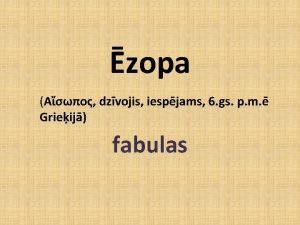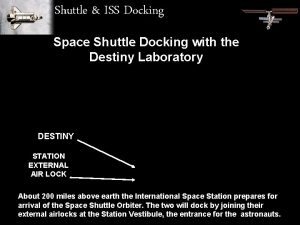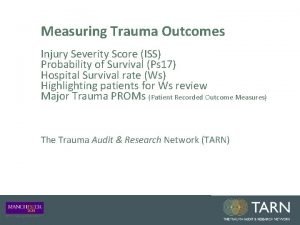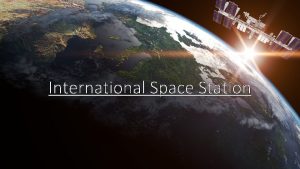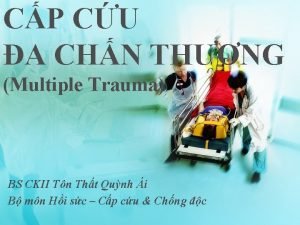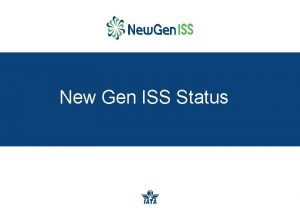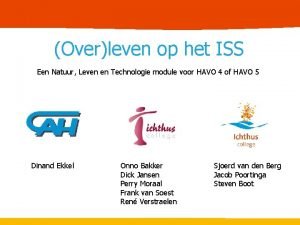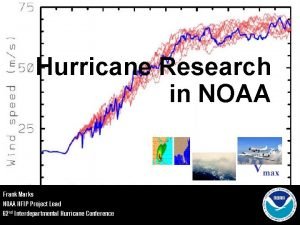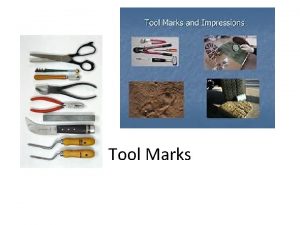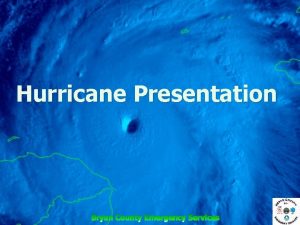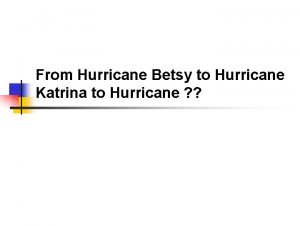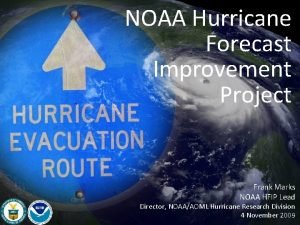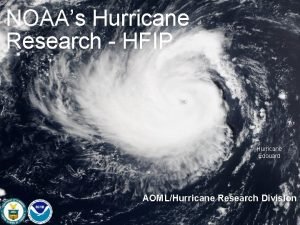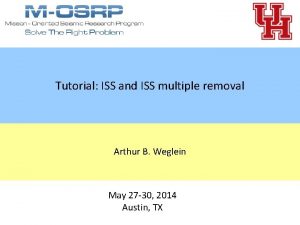Hurricane Research from the ISS Frank Marks NOAAAOMLHurricane
















- Slides: 16

Hurricane Research from the ISS Frank Marks NOAA/AOML/Hurricane Research Division 11 February 2011

Goals • Improve Forecast Accuracy • Hurricane impact areas (track) – 50% in 10 years • Severity (intensity) – 50% in 10 years • Storm surge impact locations and severity • Extend forecast reliability out to 7 days • Quantify, bound and reduce forecast uncertainty to enable risk management decisions National Hurricane Forecast Improvement Project Meeting the Nation’s Needs 2

Current Capabilities: Statistical-dynamical models • Statistical-dynamical models (SHIPS, LGEM, & RI-index) are skillful sources of intensity guidance primarily from global models • SHIPS & LGEM contain ~5560% of the variance in intensity change, RI-Index ~30% of RI variance, primarily from large-scale in GFS. • Until regional models improve there is value in improving statistical- dynamical approaches. National Hurricane Forecast Improvement Project Meeting the Nation’s Needs 3

HFIP Activities Traditional Hurricane Research Activities: • • • Observations, analysis, database, & instrument R&D (IFEX) Statistical-dynamical model development Advances in operational models (Stream 1) New HFIP Research Thrusts: • • Experimental global and regional hurricane model development (Stream 2) Data assimilation techniques and observing system strategy analysis development (Stream 1 & 2) Model evaluation tool development Socioeconomic research and development D 1 D 2 Partnership: NCEP, AOC, AOML, ESRL, GFDL, DTC, USWRP, NESDIS/STAR National Hurricane Forecast Improvement Project Meeting the Nation’s Needs 4

Current Capabilities Global Model – Ensembles Tomas (21 L) – init 00 Z 2 November http: //ruc. noaa. gov/hfip/gfsenkf GFS National Hurricane Forecast Improvement Project Courtesy of Tom Hamill & Jeff Whitaker (ESRL) Meeting the Nation’s Needs 5

Current Capabilities Global Model – Ensembles http: //ruc. noaa. gov/hfip/gfsenkf National Hurricane Forecast Improvement Project Courtesy of Tom Hamill & Jeff Whitaker (ESRL) Meeting the Nation’s Needs 6

Current Capabilities Global Model – Ensembles Shary Tomas National Hurricane Forecast Improvement Project Courtesy of Stan Benjamin & Mike Fiorino (ESRL) Meeting the Nation’s Needs 7

Current Capabilities Global Model – Ensembles National Hurricane Forecast Improvement Project Courtesy of Stan Benjamin & Mike Fiorino (ESRL) Meeting the Nation’s Needs 8

Current Capabilities Global Model – Ensembles Tomas (21 L) – init 00 Z 2 November http: //ruc. noaa. gov/hfip/gfsenkf GFS National Hurricane Forecast Improvement Project Courtesy of Tom Hamill & Jeff Whitaker (ESRL) Meeting the Nation’s Needs 9

Track Issues • Sensitivity to environmental circulation beyond TC envelope • Environment wind and thermodynamic structure through targeted observations (dropsondes) and satellite radiances. • Issues include: • poor data coverage in important areas, • inability to cover necessary targets • temporal and spatial resolution (24 h, horizontal >100 km, integrated or limited vertical resolution) National Hurricane Forecast Improvement Project Meeting the Nation’s Needs 10

Intensity Issues • Sensitive to environmental circulation beyond TC envelope (shear, eddy flux, etc. ) • Sensitive to boundary conditions, interactions, and changes along track • Sensitive to inner core dynamics • Sampling limited by presence of heavy rain, clouds, strong winds. • Issues include: • poor data coverage in important areas, • temporal & spatial resolution (3 -6 h, 5 -10 km horizontal, 1 km vertical) National Hurricane Forecast Improvement Project Meeting the Nation’s Needs 11

ISS Good coverage of global tropics and TC basins (15 -16 orbits/day) • Inclination: 51. 6° • Altitude: 350 km • Revolutions/Day: 15. 7 National Hurricane Forecast Improvement Project Meeting the Nation’s Needs 12

How can ISS DWL help? • Track: • provide regularly spaced data coverage in important areas surrounding TC for data assimilation into numerical models. • Need temporal resolution at least 24 h, horizontal resolution of 250 km, and vertical resolution of 1 km. • Accuracy to better than 1 m s-1 for mean wind surrounding TC - 1 m s-1 error in mean wind yields 86. 4 km track error in 24 h. National Hurricane Forecast Improvement Project Meeting the Nation’s Needs 13

How can ISS DWL help? • Intensity (beyond those above): • improved vertical structure of environment surrounding and above core, particularly near the tropopause for use in determining shear, divergence, and eddy flux. • higher temporal resolution 12 h, horizontal resolution 25 km, vertical resolution <1 km. • Accuracy to 1 m s-1 for vertical shear in vicinity of TC - large differences in storm intensity change for small changes in vertical shear. National Hurricane Forecast Improvement Project Meeting the Nation’s Needs 14

Summary • ISS DWL can have great impact on TC forecasts and research through improved horizontal and vertical wind structure in environment immediately surrounding storm. • DWL does not need to provide data in core for major impact. • Major advantages: • better temporal & spatial wind coverage surrounding TC than currently possible with targeted obs and satellite radiances. • higher vertical resolution especially useful near top and bottom of environment • improved accuracy of wind estimates National Hurricane Forecast Improvement Project Meeting the Nation’s Needs 15

Questions?


